Spring
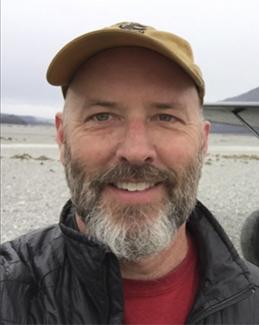 Dr. Jack Holt joined the LPL faculty as Professor in April as part of the Earth Dynamics Observatory cluster hire, with a secondary appointment in the Department of Geosciences. He received his Ph.D. from Caltech in 1997, was a postdoctoral scholar at JPL, and then spent nearly 20 years at the University of Texas at Austin, where he was most recently a Research Professor at the Institute for Geophysics and the Department of Geological Sciences. He studies ice in the solar system with an emphasis on Mars and Earth. He is a Co-Investigator on the SHARAD radar sounder instrument on the Mars Reconnaissance Orbiter, conducts airborne geophysical studies of Alaskan glaciers as part of NASA’s Operation IceBridge, and has worked extensively in Antarctica. Jack is currently developing new radar sounder techniques and conducting geophysical studies of terrestrial debris-covered glaciers as Mars analogs. The Earth Dynamics Observatory is a collaboration across departments (and even colleges) at UA designed to complement the excellence in upward-looking science established by LPL and Steward Observatory with a downward-looking view of Earth as a planet.
Dr. Jack Holt joined the LPL faculty as Professor in April as part of the Earth Dynamics Observatory cluster hire, with a secondary appointment in the Department of Geosciences. He received his Ph.D. from Caltech in 1997, was a postdoctoral scholar at JPL, and then spent nearly 20 years at the University of Texas at Austin, where he was most recently a Research Professor at the Institute for Geophysics and the Department of Geological Sciences. He studies ice in the solar system with an emphasis on Mars and Earth. He is a Co-Investigator on the SHARAD radar sounder instrument on the Mars Reconnaissance Orbiter, conducts airborne geophysical studies of Alaskan glaciers as part of NASA’s Operation IceBridge, and has worked extensively in Antarctica. Jack is currently developing new radar sounder techniques and conducting geophysical studies of terrestrial debris-covered glaciers as Mars analogs. The Earth Dynamics Observatory is a collaboration across departments (and even colleges) at UA designed to complement the excellence in upward-looking science established by LPL and Steward Observatory with a downward-looking view of Earth as a planet.
LPL is pleased to announce a new graduate student award named for a former department scientist. The LPL Leif Andersson Award for Service and Outreach will be awarded annually to a PTYS graduate student in recognition for attention to broader impacts and involvement in activities outside of academic responsibilities that benefit the department, university, and the larger community.
Leif Andersson went from being a national television quiz show star in Sweden to an LPL researcher. At LPL, he worked on mapping craters on the Far Side of the Moon based on Lunar Orbiter images from the 1960s. He died from cancer in 1979, at age 35. His family established the Leif Andersson Award for Graduate Student Service and Outreach in 2018.
Leif (prounced “Lafe”, with a long “a”) was born in Stenastorp, Sweden, and became a leader of a group of schoolchildren interested in science, forming a science fiction club and participating with his friends in launching homemade rockets in the late 1950s. He acquired fame in Sweden on a game show whose name translates as “Double or Nothing—The 10,000 Kronor Question” (based on the “The $64,000 Question” in America). In the show, a contestant was quizzed on a particular subject. When a contestant won the 10,000 kronor prize based on knowledge of astronomy, Leif, then 16, was encouraged to challenge that contestant, and Leif won. He went on to get a degree from Lund University in Sweden, before moving to the United States to earn a Ph.D. at Indiana University. He completed his Ph.D., based on observations of Pluto, in 1974, then moved to LPL. A lunar crater (appropriately, on the Far Side) is named Andersson in his honor, and there is an asteroid named 9223 Leifandersson. Given his connection with the popularization of science through television and science fiction, it is appropriate to name an award for service and public outreach in his honor.
Read more about the 2018 Andersson award recipient, Maria Steinrück, in the Graduate News chapter of this newsletter (https://www.lpl.arizona.edu/news/2018/spring/11th-annual-college-science-graduate-student-awards).
Ali Bramson and Margaret Landis are the 2018 recipients of the Gerard P. Kuiper Memorial Award.
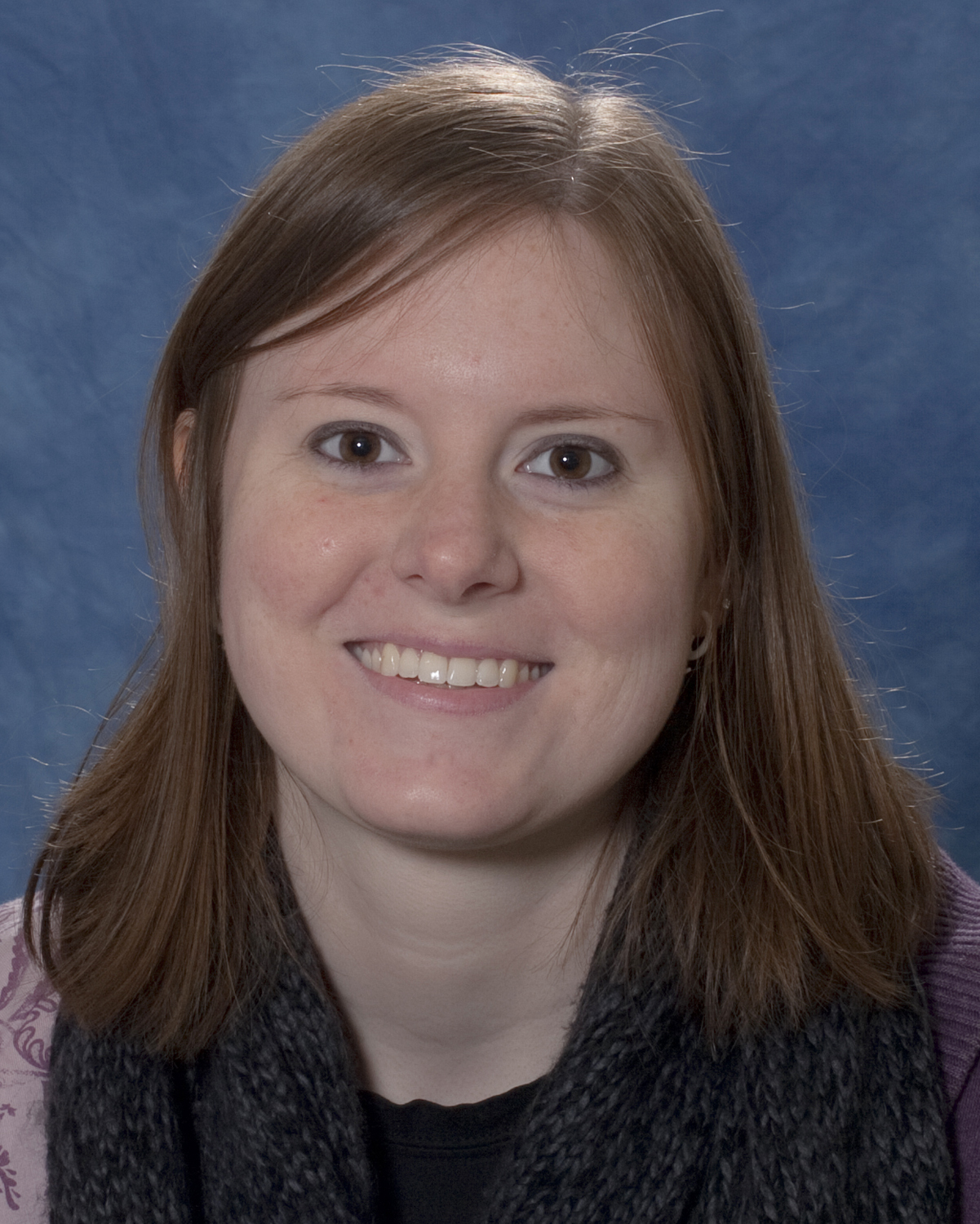 Ali is a sixth-year student who will defend her dissertation in summer 2018. Her research is based on the analysis of planetary radar data and simulations of changing ice stability as orbital elements of Mars vary. Ali's research on buried martian ice sheets garnered large amounts of scientific and media attention and featured heavily in the extended mission proposal of the Mars Reconnaissance Orbiter (MRO) spacecraft. Ali has ongoing and active participation in both the HiRISE and SHARAD instrument teams. Her work combining numerical modeling, radar, imagery and stereo topography is innovative, required mastering many technical skills and led to an important new discovery with far reaching implications.
Ali is a sixth-year student who will defend her dissertation in summer 2018. Her research is based on the analysis of planetary radar data and simulations of changing ice stability as orbital elements of Mars vary. Ali's research on buried martian ice sheets garnered large amounts of scientific and media attention and featured heavily in the extended mission proposal of the Mars Reconnaissance Orbiter (MRO) spacecraft. Ali has ongoing and active participation in both the HiRISE and SHARAD instrument teams. Her work combining numerical modeling, radar, imagery and stereo topography is innovative, required mastering many technical skills and led to an important new discovery with far reaching implications.
Ali serves as a mentor to both graduate and undergraduate students. In 2014, she developed a year-long seminar course aimed at introducing undergraduates to laboratory research. Ali was instructor of record for this course, LASC 397A, Entering Research. For creating and piloting the initial offering of this course, Ali received the college-wide Teaching and Mentoring Award for 2014. She has received many other awards and fellowships, including LPL’s Carson Fellowship, an NSF Graduate Research Program Fellowship, a NASA Earth and Space Science Fellowship, as well as an LPI Career Development Award, two Galileo Circle Scholarships, several research and travel grants, and an Arizona Space Grant Consortium Assistantship. Ali has published two first-author papers (Bramson et al. 2017; Bramson et al. 2015). She is an active participant in community and public outreach.
 Margaret is a fifth-year student graduating in summer 2018. Her research is based on age dating of landscapes with impact craters and simulations of ice stability. She has applied her expertise in this to multiple regions on Mars as well as Ceres. Margaret's work on ice accumulation rates at Mars’ North pole was published in her 2016 GRL paper. Margaret received NSF funding that allowed her to spend summer 2017 at U.S.G.S. Flagstaff to work on a crater catalog for the South Polar layered deposits. Her recent work on Ceres includes collaboration with the Dawn team and resulted in her next first-author paper in 2017. Margaret is the recipient of several awards and fellowships, including an NSF Graduate Research Fellowship and two Galileo Circle Scholarships. In 2017, she was selected to participate in a Keck Institute for Space Science study to advance Mars polar science; in 2018, she received a LPI Career Development Award.
Margaret is a fifth-year student graduating in summer 2018. Her research is based on age dating of landscapes with impact craters and simulations of ice stability. She has applied her expertise in this to multiple regions on Mars as well as Ceres. Margaret's work on ice accumulation rates at Mars’ North pole was published in her 2016 GRL paper. Margaret received NSF funding that allowed her to spend summer 2017 at U.S.G.S. Flagstaff to work on a crater catalog for the South Polar layered deposits. Her recent work on Ceres includes collaboration with the Dawn team and resulted in her next first-author paper in 2017. Margaret is the recipient of several awards and fellowships, including an NSF Graduate Research Fellowship and two Galileo Circle Scholarships. In 2017, she was selected to participate in a Keck Institute for Space Science study to advance Mars polar science; in 2018, she received a LPI Career Development Award.
Margaret was active in Service and Outreach, having won the LPL Outreach award in 2017 for her participation in events like Tucson Festival of Books, Pima Air and Space Museum Nightwings, and Art of Planetary Science, in addition to other activities such as her work as a Washington Aerospace Scholars virtual mentor. She recently attended an Alan Alda Center for Communicating Science workshop and was the Department of Planetary Sciences recipient of the College of Science Outstanding Scholar award for 2018.
PTYS undergraduate minor Adriana Mitchell has won a prestigious Goldwater Scholarship, which awards students who show exceptional promise of becoming leaders in their STEM field. The scholarship includes a $7,500 stipend which Adriana will use for summer 2018 travel to Japan to work with the Japanese Aerospace Exploration Agency in creating mission-vital image data products for the Hayabusa2 asteroid sample return mission. Working with Dr. Lucille Le Corre (Planetary Science Institute), Adriana will create tools for projecting 2D images of asteroid Ryugu on to 3D shape model. Adriana was previously a NASA Space Grant intern working with Vishnu Reddy on special characterization of asteroids. In August 2017, she tracked the solar eclipse as part of the Citizen CATE project. This year, Adriana will receive funds from the LPL Curson Travel endowment, which she will apply toward her summer research travel. Adriana will begin her senior year as a University of Arizona Optical Sciences major in the fall.
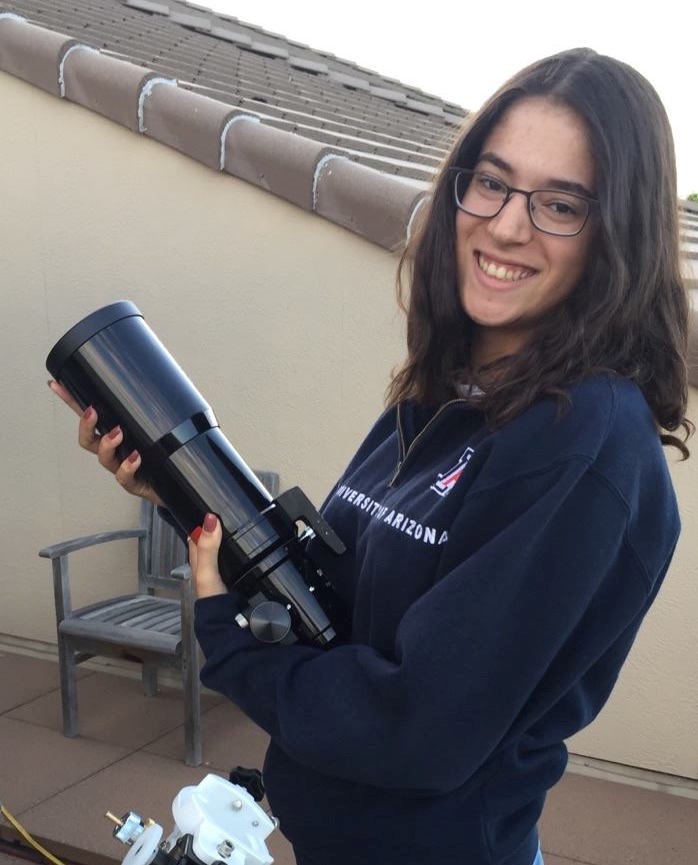
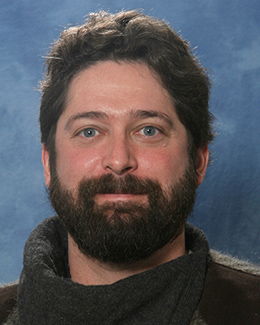 Kudos to Assistant Professor Christopher Hamilton, who received the Geological Society of America (GSA) Early Career Award in the Mineralogy, Geochemistry, Petrology, & Volcanology Division. Professor Hamilton was previously awarded a NASA Early Career Fellowship.
Kudos to Assistant Professor Christopher Hamilton, who received the Geological Society of America (GSA) Early Career Award in the Mineralogy, Geochemistry, Petrology, & Volcanology Division. Professor Hamilton was previously awarded a NASA Early Career Fellowship.
In addition the GSA Early Career Award, Professor Hamilton won a faculty fellowship from NASA Marshall Space Flight Center; the fellowship provides a stipend and a 10-week summer residency at Marshall.
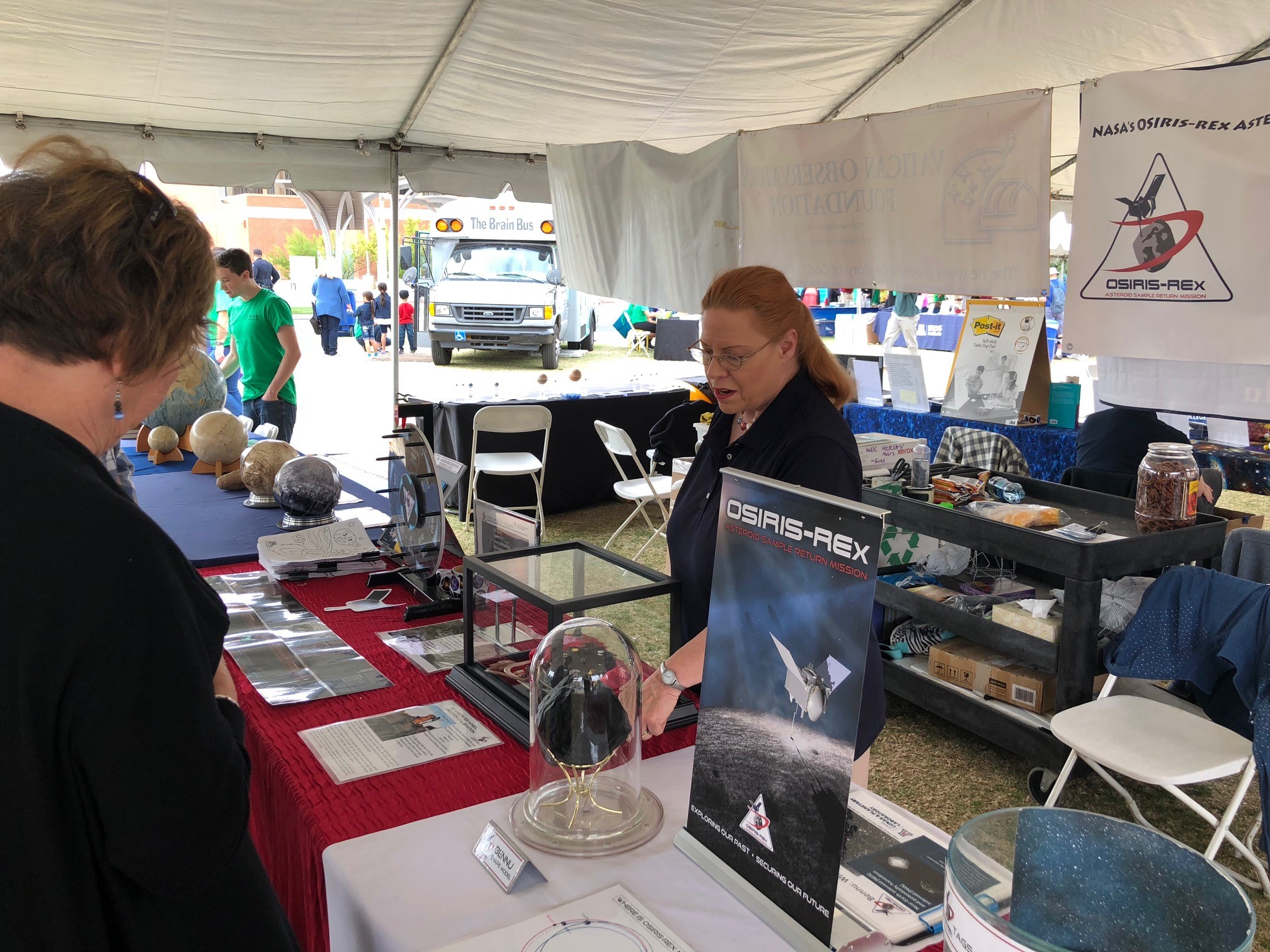
The Kuiper Space Sciences Building is getting a fresh look this spring. We're getting new paint on the walls and door frames, and new ceiling tiles. While the Kuiper residents and the crew working around each other was sometimes troublesome for both groups, the results are a huge improvement. Thanks to the UA Facilities Management paint crew for brightening up our spaces! From left to right: Nidia, Adam, Barbara, Charlie, James, Bobby; and Manny, not pictured here.
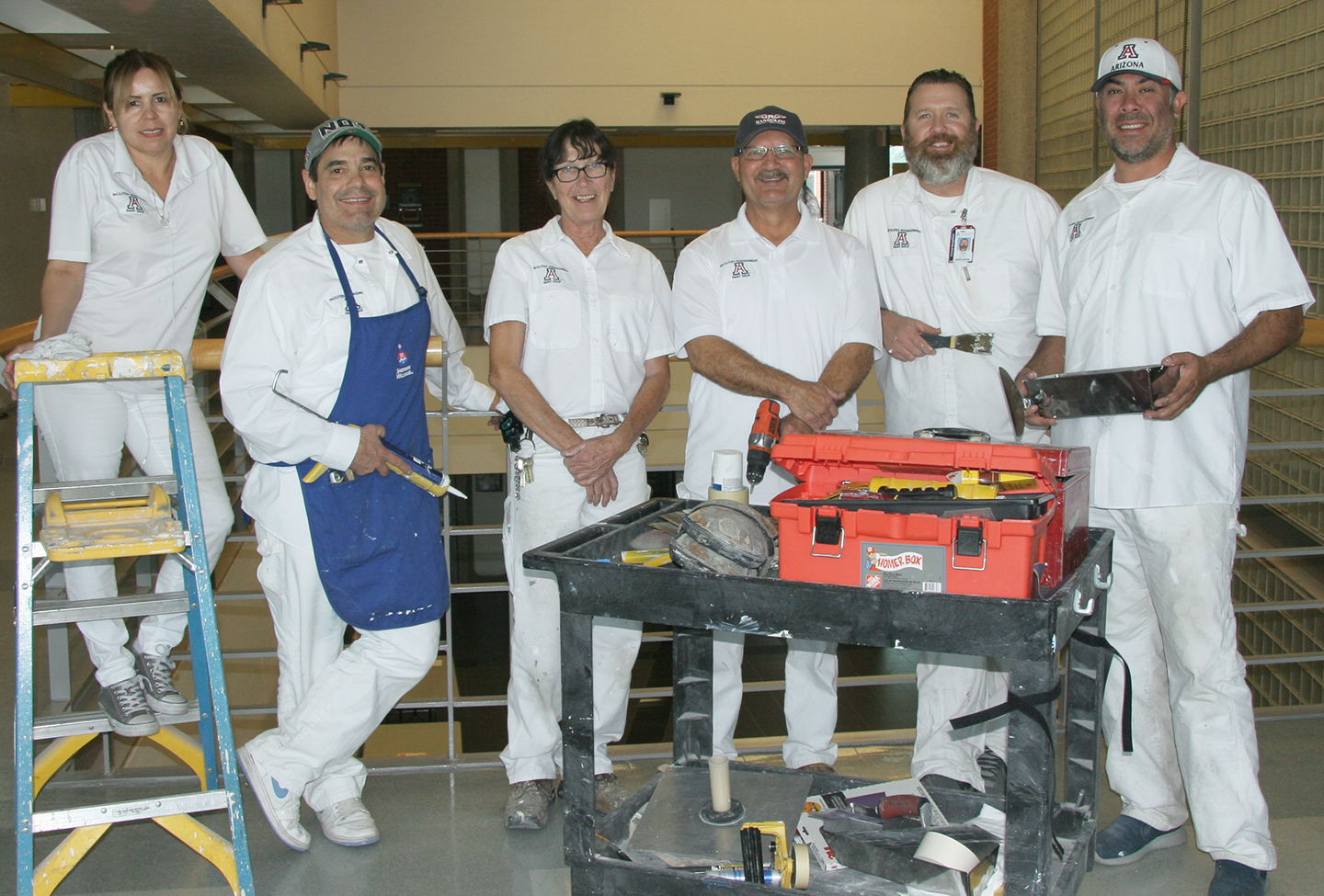
Pagination
- Previous page
- Page 56
- Next page

